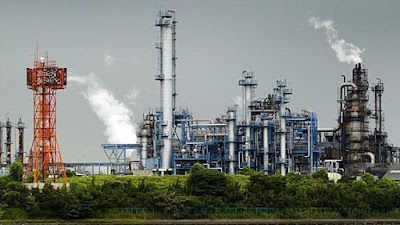There are a number of terms in economics which are hard to understand sometimes. Some of the basic things like microeconomics and macroeconomics are easy but terms like economies of scale can’t be understood easily.
If you are looking for the meaning of the economies of scale. Then your search ends here because, in this article of mine, I will tell you about it.
What is Meaning of Economies of Scale?
The large-scale production is economic in the sense the cost of production is less. This less cost of productions is a result of something called as economies of scale.
In simple words, I can say anything that contributes to decreasing the cost of production as the scale of production increases is called as economies of scale.
The economies of scale are classified into two and they are internal and external economies. I will be telling you about both in this article.
Internal Economies of Scale
Internal economies are those economies which are enjoyed by the particular organization or the business firm. These are the result of the growth and development of the firm.
It means that we can find the internal economies of scale only when the organization develops and grows. Some of the important ones are mentioned below.
1) Economies of Management.
As the organization grows then can recruit highly qualified and experienced management to work for them. They can easily pay the high salary of the experienced employees because they will be earning good amount of profits.
And those qualified and experienced employees will be an advantage for the organization. Because they will be able to manage the work more efficiently.
2) Marketing Economies.
The large-scale industries can spend more amount of money on the advertisement and promotion of their products and services. As the result of good marketing with a good amount of budget, the sales of the organization will increase.
3) Financial Economies.
The big organizations can raise investment for their new projects more easily because the investors have trust in them. Whereas the investors don’t invest easily in the small organizations. Hence this is an advantage for them.
4) Risk Bearing Economies.
As the organization grows in size the risk-bearing capacity increases. They can easily invest money in new projects, introduce new products, open new market etc.
5) Diversification of Output.
This is one of the most important ones in this list, the big organizations use this diversification of output very often. If in case one of their units is under loss then they will put the money from the other unit which is running for profit. By doing this they can easily manage the loss.
6) Diversification of Buying.
The large-scale productions who are manufacturing the goods and services need raw materials to run their production. But what if the supplier of raw materials fails to supply it on time?
Well, this will not be a problem for them because they can buy it from multiple sellers. Because the large-scale industries do not depend upon a single supplier.
7) Diversification of Market.
After the production of the products and services when it is time to release them to market. The small organizations will be able to release their products and services in limited markets.
But this is not the case in terms of large organizations they can release their products in local, national as well as international markets.
8) Technical Economies.
The large-scale productions can invest in the machinery which is latest and up to date machines. The updated machines will help them to bring down the cost of production and hence it is considered as one of the economies.
External Economies of Scale.
These economies are not used by a particular organization but all the organizations which are performing the operations in the area.
1) Economies of Concentration.
The growth of the industry results in its concentration in a particular area. Because of this, the industries will get advantages like availability of skilled labors, transport facility etc.
The concentration of an industry will boost the growth of the infrastructural facilities and these facilities help the firms of the particular location.
2) Economies of Information.
When an industry moves on a large-scale it can carry out its research jointly. Some research is costlier from the point of view of a particular firm.
When the industry is small scale the available scientific and trade information will help the industry in producing at a lower cost.
3) Economies of Specialization.
When an industry is operating on a large scale the individual units may take specialization. For example, when the cotton textile industry grows up that time some firms may go with the production of the only shirtings.
Some may go with the production of only suitings etc. Such specialization helps the firm in expanding the output and reducing the cost of production.
Also Read:
- Roles and Responsibilities of Managerial Economist.
- Functions of Managerial Economist.
- And Who is Managerial Economist?
Conclusion
So these are the internal and external economies of scale along with its meaning. I hope you are clear with all the information mentioned in this guide. But if you have any kind of doubts in your mind then you can comment down below.
